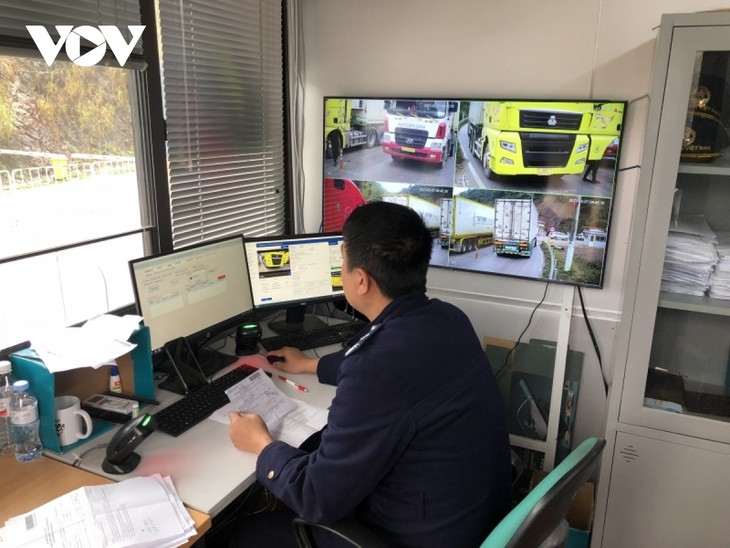(VOVWORLD) - Two-way trade between Vietnam and China via Lang Son’s border gates is booming again since China re-opened its border on January 8. Every day, more than 1,000 trucks come through the Huu Nghi, Tan Thanh, Chi Ma, Coc Nam and Dong Dang border gates.
 At the Customs Office at Tan Thanh border gate, Lang Son province At the Customs Office at Tan Thanh border gate, Lang Son province |
It takes trader Ha Trung Duc less than 30 minutes to clear customs with 50 tons of jackfruit and mangos bound for China. Duc says customs procedures at Tan Thanh border gate are easy and the fruit remains fresh when delivered to customers.
Duc said: "
It takes 30 minutes to an hour to park the truck and clear customs. Today, I have 24 tons of jackfruit and 26 tons of mangos."
It’s also easy for trucks carrying agricultural products from China to enter Vietnam. Ms Pham Thi Son, a trader in Bac Ninh, says she imported more than 64 tons of onions from China today.
"The customs procedures went smoothly. We go and return within a day. The border gates are only especially crowded when we export watermelon and mango." said Son.
According to the Customs Department of Lang Son province, nearly 220,000 tons of fruit have been exported via the 5 border gates of Lang Son province since the beginning of the year, up 140% from last year. Vietnam has exported nearly 23,000 tons of durian via the Huu Nghi International Border Gate over the last month and a half.
In order to ensure a smooth export of fruits, the Lang Son Customs Department recommends enterprises focus more on food hygiene and safety, quality control, and product traceability.
Nguyen Anh Tai, Deputy Director of the Department, said: "Most of Vietnam's exports to China are border trade. China has tightened its control of food quality, hygiene, and safety. Vietnamese businesses need to pay more attention to product origin, growing area codes, and food hygiene and safety."
Border trade in Lang Son is expected to increase sharply in the coming months, when Vietnam's key agricultural products will enter the harvest season. In addition to road transportation, businesses are encouraged to use the railway to avoid congestion in peak periods.